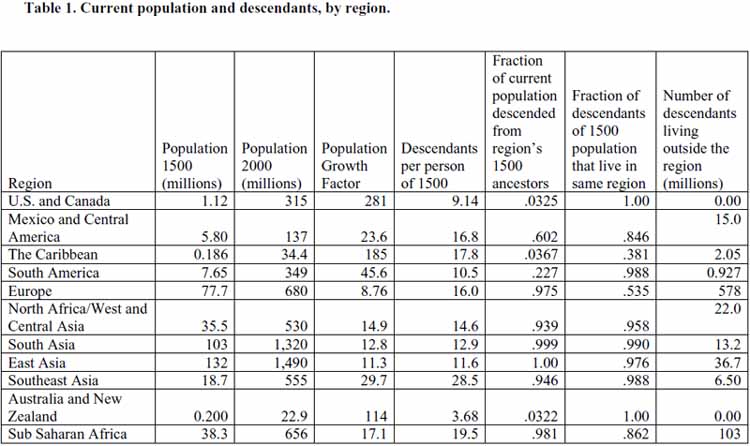|
SEARCH MY WASHINGTON COUNTY PENNSYLVANIA WEBSITES
History of and Other Families (o_f) from
The City and County of Washington Pennsylvania
Enhance your genealogy research about families in Little Washington, Washington County PA
using newspaper articles, birth, death, marriage, notices, obituaries (often with cemeteries
named), probates, deeds, surname finds, family trees, family histories, reunions and other information.
Site Search or Page Search (Ctl Key+F) easily finds items of interest.
Washington County Pennsylvania History and Families
Historical Populations, Demographics and Statistics
Regional current population and descendants, Putterman, Louis and David N.
Weil, 2008
Louis Putterman and David N. Weil conducted a study "that looks
at the ancestors of the people who currently live in a country" beginning in
1500 to 2000 to help understand how ethnicities affect attitudes toward
employment and income.
Post-1500 Population Flows and the Long Run Determinants of
Economic Growth and Inequality
Louis Putterman and David N. Weil
NBER Working Paper No. 14448
October 2008,Revised October 2009
JEL No. F22,N30,O40
ABSTRACT
We construct a matrix showing the share of the year 2000 population in every country that is descended from people in different source countries in the year 1500.
Using this matrix, we analyze how post-1500 migration has influenced the level of GDP per capita and
within-country income inequality in the world today. Indicators of early development such as early state
history and the timing of transition to agriculture have much better predictive power for current GDP when one
looks at the ancestors of the people who currently live in a country than when one considers the
history on that country’s territory, without adjusting for migration. Measures of the ethnic or linguistic
heterogeneity of a country’s current population do not predict income inequality as well as measures of the
ethnic or linguistic heterogeneity of the current population’s ancestors. An even better predictor of
current inequality in a country is the variance of early development history of the country’s inhabitants,
with ethnic groups originating in regions having longer histories of agriculture and organized states
tending to be at the upper end of a country’s income distribution. However, high within-country variance of
early development also predicts higher income per capita, holding constant the average level of early development.
Quoted from Page 1: "Economists studying income differences among countries in the world today have
been increasingly drawn to examine the influence of long-term historical factors. While the theories underlying these analyses vary, the general finding is that things that were
happening 500 or more years ago matter for economic outcomes today. Hibbs and Olsson (2004) and Olsson and Hibbs (2005), for example, find geographic factors that
predict the timing of the Neolithic revolution in a country also predict income and the quality of institutions in 1997. Comin, Easterly, and Gong (2006, 2009) show that the
state of technology in a country 500, 1500, or even 3000 years ago has predictive power for the level of output today. Bockstette, Chanda and Putterman (2002) find that an index
of the presence of state-level political institutions from year 1 to 1950 has positive correlations, significant at the 1% level, with both 1995 income and 1960-95 income
growth. And Galor and Moav (2007) provide empirical evidence for a link from the timing of the transition to agriculture to current variations in life expectancy."

Source: Putterman, Louis and David N. Weil, 2008, “Post-1500 Population Flows and the Long Run Determinants of Economic Growth and Inequality,” NBER Working Paper 14448.
PDF version of full paper: Putterman, Louis and David N. Weil, 2008, “Post-1500 Population Flows and the Long Run Determinants of Economic Growth and Inequality,” NBER Working Paper 14448.
See VOX-CEPR's Policy Portal
for a discussion of this paper and its importance. ["VoxEU.org – CEPR’s policy portal – was set up in June 2007 to promote the dissemination of research-based policy analysis and commentary by leading economists."...
The Centre for Economic Policy Research (www.cepr.org), founded in 1983, is a network of over 700 researchers based mainly in universities throughout Europe, who collaborate through the Centre in research and its dissemination. The Centre’s goal is to promote research excellence and policy relevance in European economics."]
 
*
|